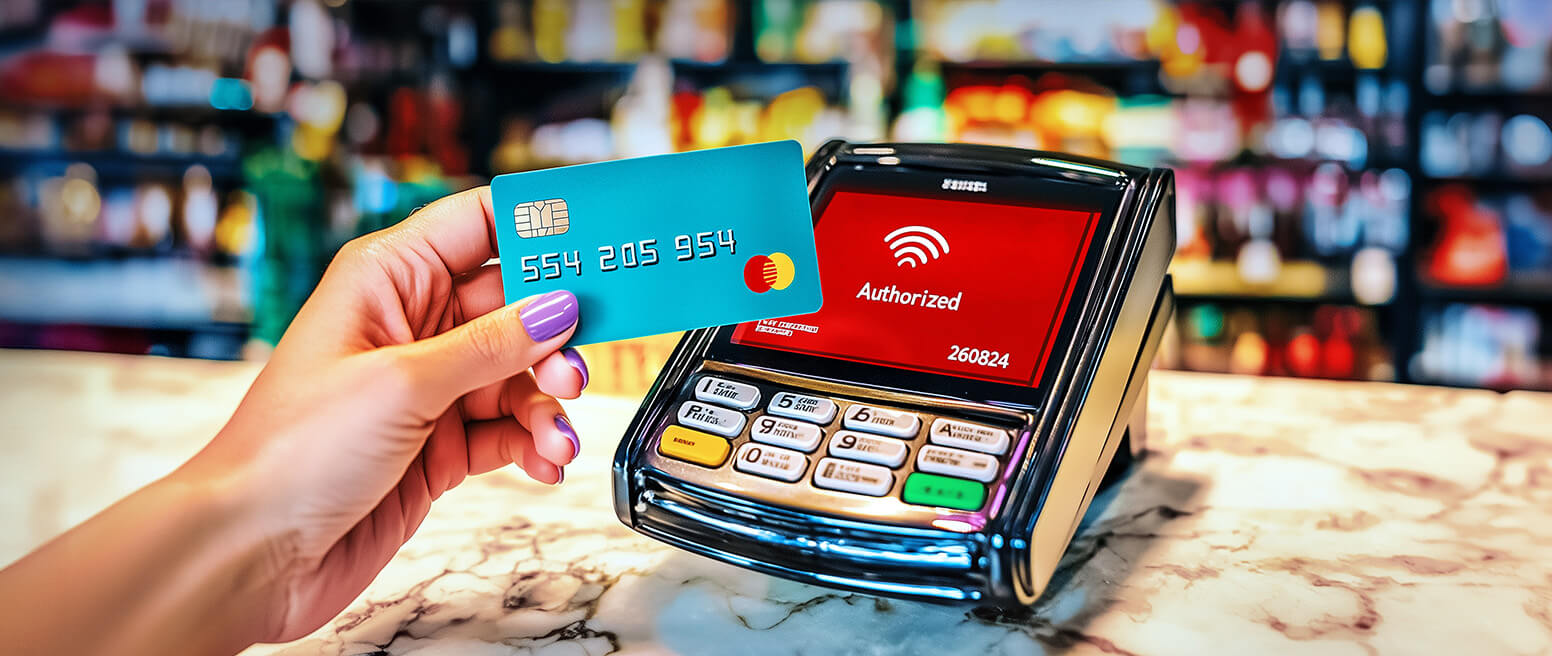Reduce Churn & Improve Conversions With Mastercard Merchant Advice Codes
Credit card declines? No one's a fan. They create an uneasy atmosphere for the customer, dishearten the merchant, and frankly, leave everyone involved feeling frustrated.
As a merchant, you're bound by the authorization responses you receive. disregarding them could mean higher fees, penalties, and even those dreaded chargebacks.
Thankfully, the card networks are stepping up to address this very issue. Merchant advice codes are designed to give merchants and acquirers a chance to retry authorization requests in a more informed manner, reducing the chance of declines.
So, you might be wondering: what exactly are these new merchant advice codes? How do they make the process of retrying a declined transaction a smoother, more successful process? Let’s take a look.
Recommended reading
- What Are Transaction IDs? How They Help Stop Fraud
- Authorization Holds: What are They & Why Are They Used?
- Credit Card Decline Codes: The Complete List for 2025
- Credit Card Processing Fees: How to Lower Your Rate in 2025
- Credit Card Decline Rate: How to Calculate & Recover Sales
- Do You Know the Credit Card Authorization Codes?
What are Merchant Advice Codes?
- Merchant Advice Codes
Merchant advice codes function as explicit communication channels from issuers to merchants. They clarify the reasons why a transaction was declined, and they offer guidance to merchants on actions that can be taken to ensure their customers remain satisfied and engaged.
[noun]/mur • chnt • uhd • vise • kowd/Consider the following scenario: you wish to run a credit card transaction. The initial step involves sending an authorization request. This request is directed to the cardholder's issuing bank. The bank, in return, sends a response indicating whether the authorization is approved or declined.
In the event of a decline response, it is accompanied by a decline code. This code offers additional insight into the reason for the decline. For instance, the card may have expired, it might have been reported as lost or stolen, or there could be insufficient funds to cover the transaction. Now, the authorization response may also be accompanied by a merchant advice code, which the issuer can use to communicate more clearly with the merchant.
These codes serve as valuable guides for merchants. It lets the bank provide direction on how to resolve the cause of an authorization decline, and continue delivering exemplary service to their subscription-based customers.
“Merchant advice code” is a term specific to Mastercard. These codes are called “recurring payment cancellation” codes on the Visa network.
How it Works: Merchant Advice Codes in Practice
In card-network speak, this update introduces new data values to the existing Mastercard merchant advice code field (DE48 SE84). This field communicates information about credit card declines post-transaction attempt.
To leverage these new advice codes, merchants and their acquirers need to familiarize themselves with the new data values and their implications. This knowledge forms the foundation of their decisions about retrying declined transactions and timing those retries.
List of Mastercard Merchant Advice Codes
Mastercard issuers use merchant advice codes to respond to authorization requests, and as a communication tool with merchants regarding a cardholder's account. Depending on the specific situation, Mastercard will match authorization response to one of the following merchant advice codes:
| Mastercard Response Code | Message | Description |
| 01 | Updated information needed. | Refer to “Account Updater” to confirm the decline code. Only retry using 3D Secure 2.0 if the decline code is 83. |
| 02 | Try again later. | Cannot approve at this time. |
| 03 | Do not try again. | Payment blocked by network. |
| 04 | Token requirements are not fulfilled for this token type. | Token mismatch. Call network. |
| 21 | Payment canceled. | Payment canceled by network. |
| 24 | Retry after 1 hour (Mastercard use only) | A hold or other condition may temporarily make the funds unavailable. You may retry the transaction later. |
| 25 | Retry after 24 hour (Mastercard use only) | A hold or other condition may temporarily make the funds unavailable. You may retry the transaction later. |
| 26 | Retry after 2 days (Mastercard use only) | A hold or other condition may temporarily make the funds unavailable. You may retry the transaction later. |
| 27 | Retry after 4 days (Mastercard use only) | A hold or other condition may temporarily make the funds unavailable. You may retry the transaction later. |
| 28 | Retry after 6 days (Mastercard use only) | A hold or other condition may temporarily make the funds unavailable. You may retry the transaction later. |
| 29 | Retry after 8 days (Mastercard use only) | A hold or other condition may temporarily make the funds unavailable. You may retry the transaction later. |
| 30 | Retry after 10 days (Mastercard use only) | A hold or other condition may temporarily make the funds unavailable. You may retry the transaction later. |
Bear in mind that, between 2019 and 2020, Mastercard rolled out two new fees under its Transaction Processing Excellence (TPE) Program, aimed at encouraging better processing practices:
- Excessive Authorization Attempts Fee: This applies when there are an excessive number of account testing attempts on a single account number, from the same card acceptor, within a 24-hour span.
- Nominal Amount Authorization Fee: This relates to an approved nominal amount authorization with a subsequent renewal for transactions equivalent to $1 (or €1, or less than one full unit of currency). This is applicable for card-not-present transactions.
The intent behind these fees is to dissuade merchants from trying to push through previously declined transactions. While additional costs are rarely welcome, the silver lining here is a potential reduction in both false positives and chargebacks.
The Trouble With Declines in Subscription Models
Increases in declines have caused considerable disruption to the Mastercard network, often resulting in reduced approval rates. In the absence of strong regulations, merchants are confronted with higher rates of false declines, which undermine profits and accelerate customer attrition.
Several factors contribute to the problem of false declines, including:
Misidentification of Fraudulent Transactions
Credit card agencies employ systems to detect potential fraud. However, when these systems erroneously classify a legitimate transaction as fraudulent, a hard decline follows. This means the issuer has refused the payment, and retrying will not resolve the issue.Payment Gateway Problems
Technological issues, such as data mapping errors or incorrect data formats, can lead to a card being declined. The transaction may be reattempted and approved later, if the issue in question can be resolved.Card Balance Inconsistencies
A “soft” decline might take place if a card's available credit limit is inadequate for covering a transaction. This situation might arise if a customer's recent payment has not been processed, resulting in a soft false decline.Subscription-based businesses are especially impacted by these issues. The appeal of a subscription model lies in its simplicity: a customer subscribes, enjoys monthly services, and offers payment in return. Ensuring customer satisfaction guarantees ongoing subscriptions. Naturally, though, the frequency of false declines tends to get in the way.
False declines are responsible for nearly half of all customer churn for subscription-based businesses. In turn, this substantially raises the cost of customer acquisition.
How Merchant Advice Codes Can Solve This Issue
When a recurring transaction is declined, the cardholder isn't always readily available to provide an updated card or propose a different payment solution. More often than not, customers equate a break in service as a signal to sever ties and seek alternatives.
Merchant advice codes and recurring payment cancellation codes can be an invaluable tool to combat this. They will enable:
Again, subscription-based merchants stand to reap the most substantial benefits. However, these codes offer valuable insights for any merchant operating in the card-not-present market.
5 Tips to See Higher Approval Rates
With these codes in place, you can get key insights that will let you take straightforward yet effective steps to streamline your billing process. That said, there are some basic practices you can adopt which will help you see better approval rates, independent of these changes.
Sending reminders ahead of recurring payments can be especially beneficial for businesses with irregular billing cycles. This proactive approach can help prevent potential issues by informing customers — and their financial institutions — of upcoming charges through their preferred communication method.
Moreover, merchants should consider utilizing account updater services offered by some card networks. These services automatically refresh expired payment card information, removing the need for cardholder intervention.
To further optimize their subscription services, you can adopt several best practices without making your checkout processes overly complex:
#1 | Decode Decline Triggers
Initiate by gaining a comprehensive understanding of fraud signals, as well as the factors causing false declines. The goal is to dissect why certain transactions are approved while others are declined.
#2 | Leverage Data
Avoid rejecting orders based on generic signs. Implement sophisticated, intelligent fraud filters that can comprehend context more accurately.
#3 | Implement a Layered Strategy
Relying on one or two indicators isn't enough. Deploy an array of complementary fraud detection tools to gain a thorough insight into each transaction.
#4 | Conduct Manual Reviews
Avoid blanket rejection of all purchases flagged by a fraud filter. Manually scrutinize all dubious transactions to ensure precise decision-making.
#5 | Keep Up With Technology
Lastly, don’t neglect the recent advancements in AI-enabled technology. As fraud rapidly evolves, your strategy to counter it needs to keep pace.
FAQs
What are merchant advice codes?
Merchant Advice Codes (for Mastercard transactions), or Recurring Payment Cancellation (for Visa transactions), function as explicit communication channels from issuers to merchants. They show the reasons why a transaction was declined, and they offer guidance to merchants on the actions that can be taken to ensure their customers remain satisfied and engaged.
What are commonly used merchant advice codes?
Mastercard issuers use merchant advice codes to respond to authorization requests and as a communication tool with merchants regarding a cardholder's account. Depending on the specific decline code, MasterCard will map Authorization Response Categories to one of these MACs: 01– updated information needed, 02– try again later, and 03– do not retry.
Do merchant advice codes help retain customers?
Merchant advice codes equip subscription-based merchants with an influential tool to curb churn and enhance customer retention. While these codes offer valuable insights for any merchant operating in a card-not-present scenario, subscription-based merchants stand to reap the most substantial benefits.















